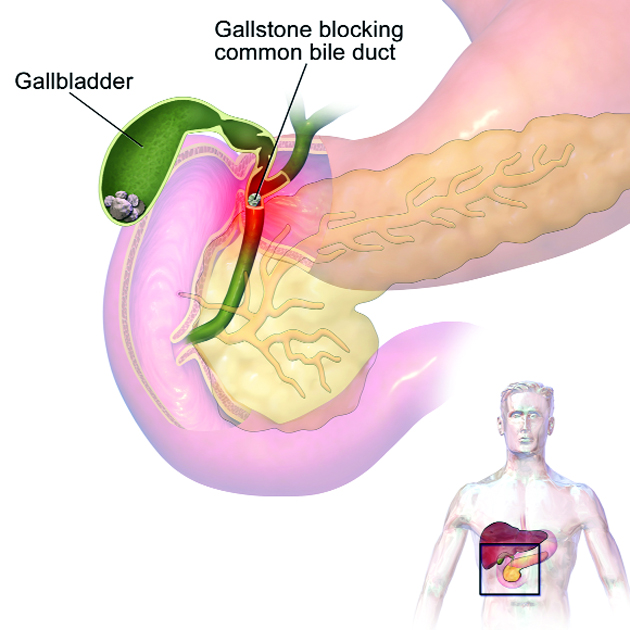Dr Sahil Sandal
Gallstone disease is a common medical condition that affects millions of people worldwide. While it may not always make headlines, understanding this ailment is crucial because it can cause severe pain and lead to complications if left untreated. In this article, we will explore what gallstones are, their causes, symptoms, and most importantly, how to prevent them.
What Are Gallstones?
Gallstones are solid, gravel-like deposits that are formed in the gallbladder, a small organ located beneath the liver. The gallbladder plays a vital role in aiding digestion by storing and releasing bile, a fluid produced by the liver that helps break down fats in the food we consume. Gallstones can range in size from as small as a sand grain to as large as a golf ball, and they can vary in number.
Causes:
Cholesterol Stones: These are the most common type of gallstones, primarily composed of cholesterol. They form when there is an imbalance in the substances that make up bile, leading to the precipitation of cholesterol crystals.
Pigment Stones: These are less common and are formed when there is excess bilirubin (a pigment produced when red blood cells are broken down in the body) in the bile. This type of stone is more likely to occur in individuals with certain medical conditions, like cirrhosis or hemolytic anemia.
Symptoms of Gallstones
Asymptomatic: Most individuals with gallstones are asymptomatic. In such individuals, gallstones are detected incidentally on abdominal imaging.
Symptomatic:
Biliary colic: an intense, dull discomfort located in the right upper or central upper abdomen that may radiate to the back
Atypical symptoms:
Abdominal distension/bloating
Belching
Fullness after meals/early satiety
Nausea or vomiting alone
Regurgitation
Epigastric or retrosternal burning
Chest pain
Nonspecific abdominal pain
Complications:
Cholecystitis: right upper quadrant pain, fever due to inflammation of the gallbladder
Choledocholithiasis with or without acute cholangitis due to slippage of gall stone in the common bile duct and presents with jaundice and/or fever, vomiting
Gallstone pancreatitis due to obstruction of the flow from the pancreatic duct and presents with severe pain, vomiting and fever
Gallbladder cancer: may present with unintentional weight loss, right upper abdomen discomfort or mass
Preventing Gallstones
Preventing gallstones is possible by adopting a healthy lifestyle and dietary choices. Here are some tips
Maintaining a healthy Weight: Obesity is a significant risk factor for gallstones. Losing weight gradually through a balanced diet and regular exercise can decrease your risk.
Eat a high-fiber diet: Foods rich in fiber, such as fruits, vegetables, and whole grains, may help reduce the risk of gallstones.
Limit Saturated Fat: Consuming excessive saturated fats can contribute to gallstone formation. Opt for lean protein sources and healthy fats instead
Stay Hydrated: Having plenty of water can help prevent the build-up of concentrated bile, reducing the risk of gallstones.
Moderate Alcohol Consumption: Excessive alcohol intake may increase the risk of gallstones. If you drink alcohol, do so in moderation.
Be Cautious with Rapid Weight Loss: Avoid crash diets or very low-calorie diets, as these can increase the risk of gallstones.
Diagnosis
Common diagnostic methods:
Imaging: Various imaging techniques are used to visualize the gallbladder and detect gallstones. These may include ultrasound, computed tomography (CT) scans, or magnetic resonance imaging (MRI).
HIDA SCAN: A hepatobiliary iminodiacetic acid (HIDA) scan can assess the gallbladder’s functionality, helping to identify issues such as gallbladder dysfunction
Treatment Options
The management of gallstone disease depends on several factors, including the presence of symptoms, the type of gallstones, and the patient’s overall health. Treatment options can vary from conservative approaches to surgical intervention:
Observation
For individuals with asymptomatic gallstones, a watch-and-wait approach may be recommended. If the stones remain silent and do not cause any symptoms or complications, treatment may not be necessary.
Surgery may be required in selected patients with asymptomatic Stones
Increased risk of gallbladder cancer
Porcelain/ Calcified gallbladder
Large gallstones (particularly if larger than 3 cm)
Gallbladder Polyp
Anomalous PancreatoBiliary Duct Junction
Hemolytic disorders: Patients with
Sickle cell disease
Hereditary spherocytosis
Medications
In certain cases, medications may be prescribed to dissolve cholesterol gallstones. Ursodeoxycholic acid (ursodiol) is a common medication used for this purpose. However, this treatment can take months or even years to be effective and may not work for everyone.
Non-Surgical Procedures
For patients with symptomatic gallstones who are not suitable candidates for surgery, non-surgical procedures may be considered. One such procedure is endoscopic retrograde cholangiopancreatography (ERCP) with sphincterotomy, where a scope is used to remove or break down stones in the biliary tree.
Surgical Removal:
If the stones cause any symptoms or complications, treatment is necessary. The most definitive treatment for gallstone disease is the removal of the gallbladder, a procedure known as cholecystectomy. This can be done through traditional open surgery or minimally invasive laparoscopic or Robotic surgery. Gallbladder removal is generally safe and rarely results in long-term complications.
Conclusion:
Gallstone disease is a common yet often misunderstood medical condition. While gallstones can develop without causing any noticeable symptoms, they can also lead to excruciating pain and complications if left untreated. Understanding the causes, symptoms, and risk factors of gallstones is essential for early diagnosis and effective management
Individuals can take proactive steps to reduce their risk of gallstone formation
(The author is Assistant Professor Department of Surgical Gastroenterology, AIIMS Jammu.)


